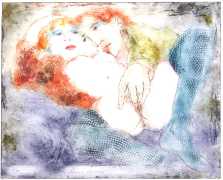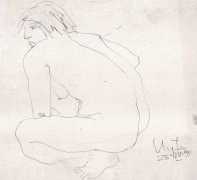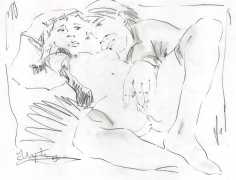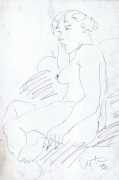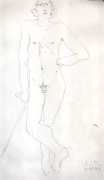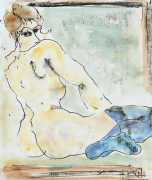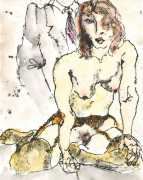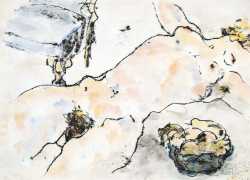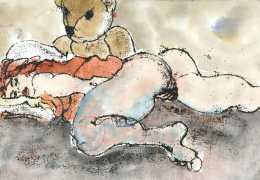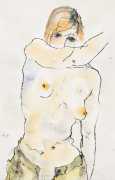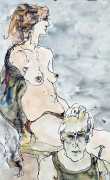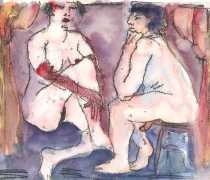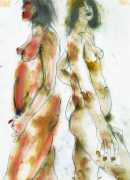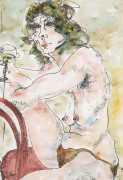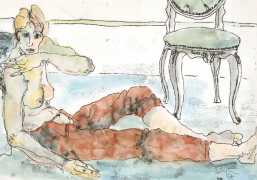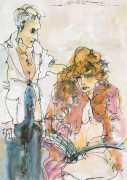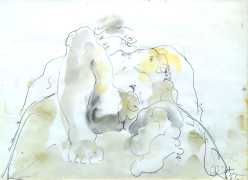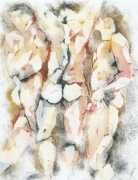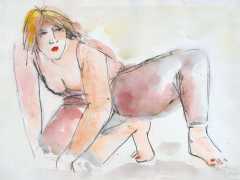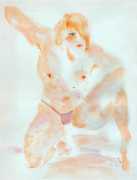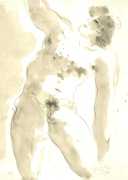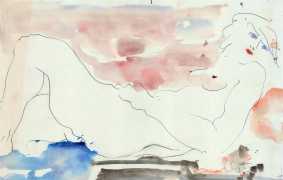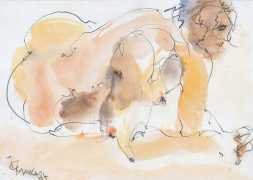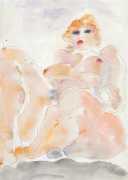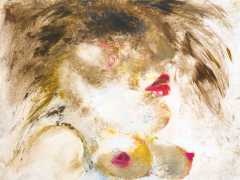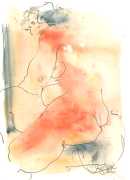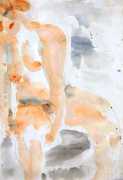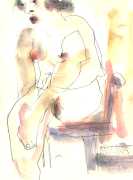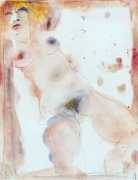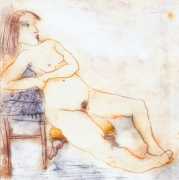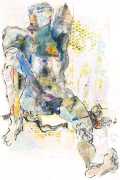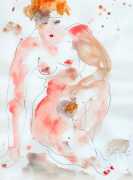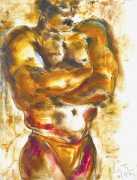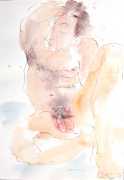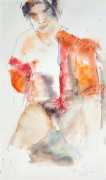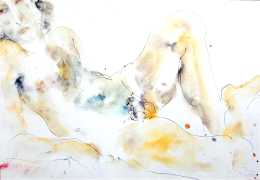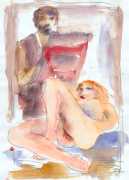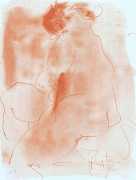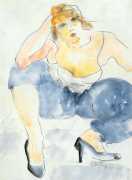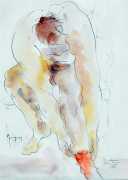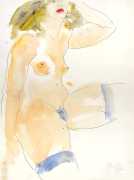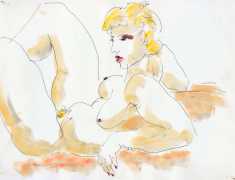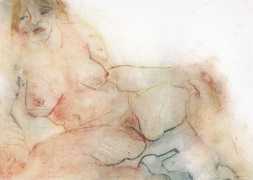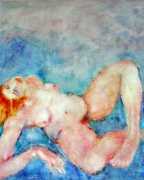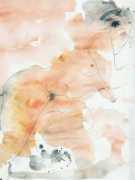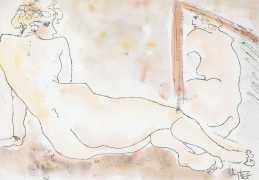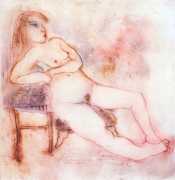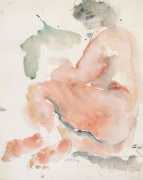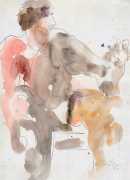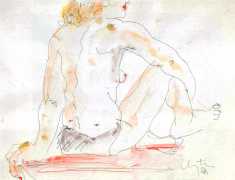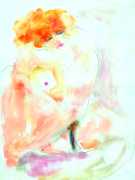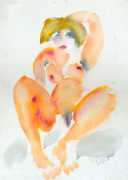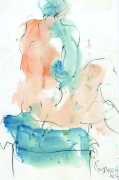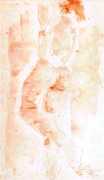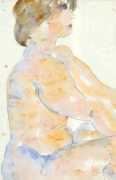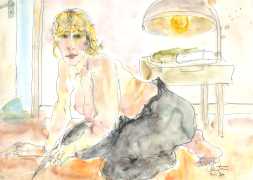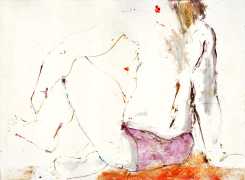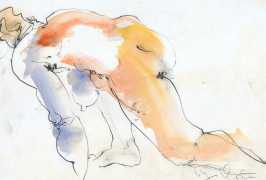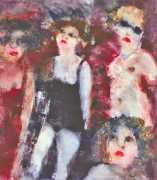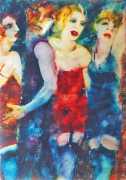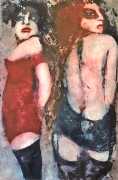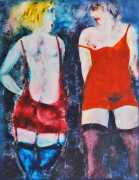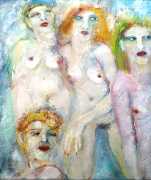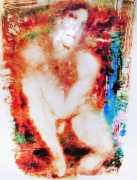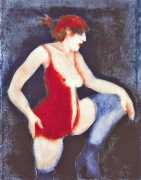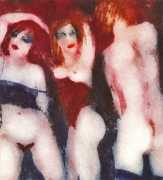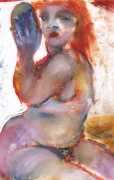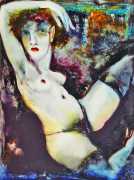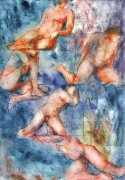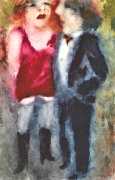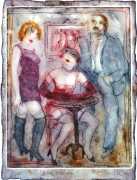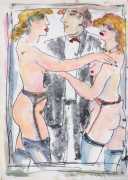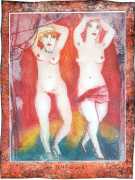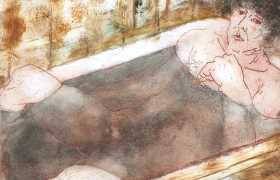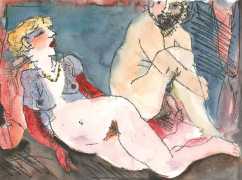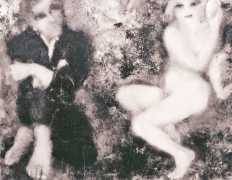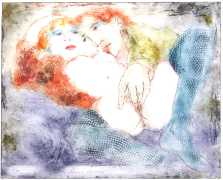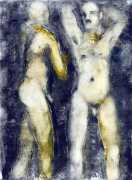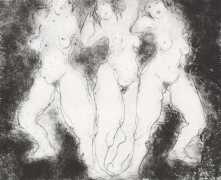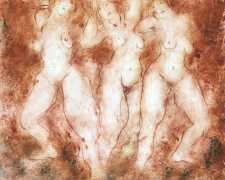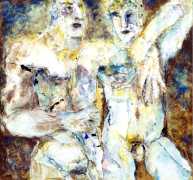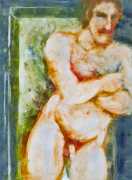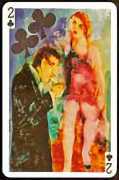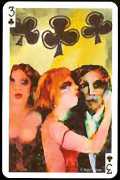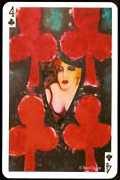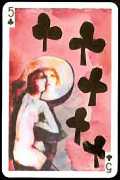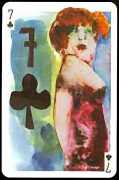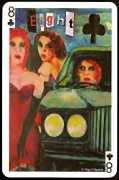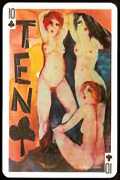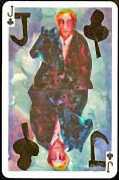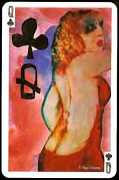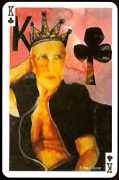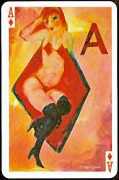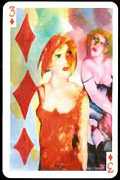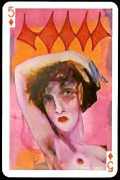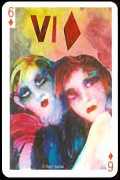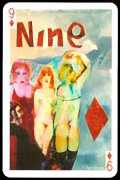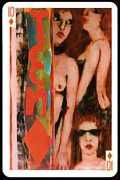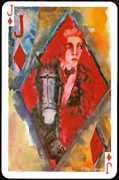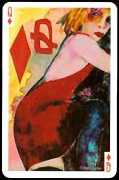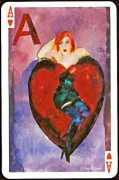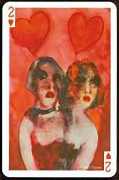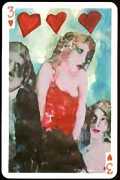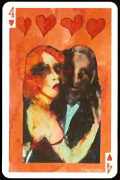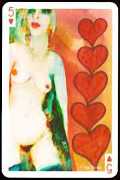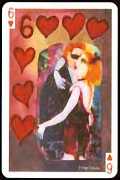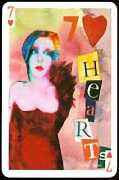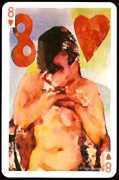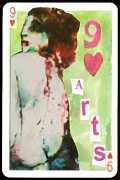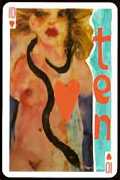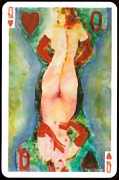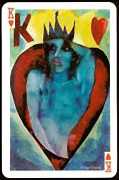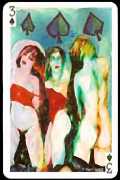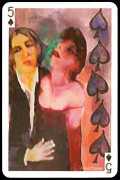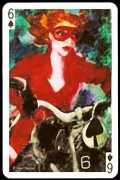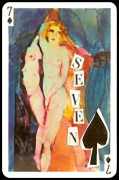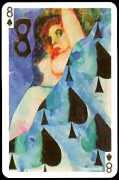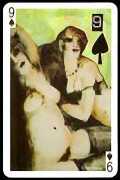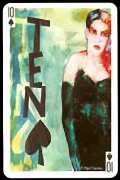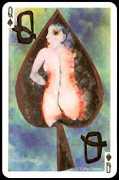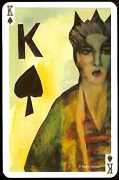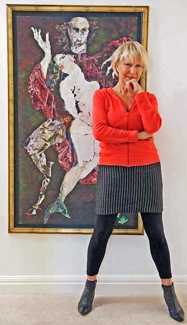 The prolific and original painter, printmaker and sculptor Inge Clayton grew up near Salzburg in Austria, then after she moved to London in 1961 she spent the rest of her life in England. The original purpose of the move was to work as an au pair, but she had always wanted to explore her creativity through art. She started work as an interior architect and a jewellery designer, working for the man she married and took her surname from; they had two children, but separated in 1985. From 1976 to 1984 she had studied at the Camden Arts Centre, learning collage with Jack Yates and life drawing with John Nicholl, she also took classes in printmaking at St Albans Art College under Peter Jacques. It was Jack Yates who introduced her to the collages of Kurt Schwitters and the paintings of Oskar Kokoschka. She recalled how deeply the artworks of Schwitters moved her: ‘They are so intricate and yet so simple – artless one might say. There was a sense of coming home, a magnetic quality to his work.’
The prolific and original painter, printmaker and sculptor Inge Clayton grew up near Salzburg in Austria, then after she moved to London in 1961 she spent the rest of her life in England. The original purpose of the move was to work as an au pair, but she had always wanted to explore her creativity through art. She started work as an interior architect and a jewellery designer, working for the man she married and took her surname from; they had two children, but separated in 1985. From 1976 to 1984 she had studied at the Camden Arts Centre, learning collage with Jack Yates and life drawing with John Nicholl, she also took classes in printmaking at St Albans Art College under Peter Jacques. It was Jack Yates who introduced her to the collages of Kurt Schwitters and the paintings of Oskar Kokoschka. She recalled how deeply the artworks of Schwitters moved her: ‘They are so intricate and yet so simple – artless one might say. There was a sense of coming home, a magnetic quality to his work.’
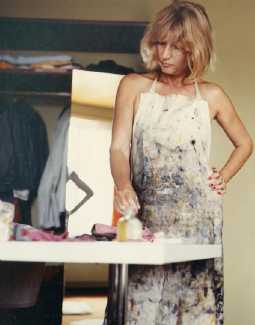 Working in many different media, from pencil and watercolour to thick impasto, all her work has an immediacy, a sense of needing to catch the moment in a pose or social situation. British critics have often pointed out the European heritage in her work, and have likened her to artists such as Kokoschka, Otto Dix, and George Grosz, but her nudes are sensuous and painterly in a style which is very much her own. This connection to her Austrian roots is the most striking in the power of her figures, who remain self-confident despite their naked or half-dressed abandonment. There is nothing British or oblique about their gaze.
Working in many different media, from pencil and watercolour to thick impasto, all her work has an immediacy, a sense of needing to catch the moment in a pose or social situation. British critics have often pointed out the European heritage in her work, and have likened her to artists such as Kokoschka, Otto Dix, and George Grosz, but her nudes are sensuous and painterly in a style which is very much her own. This connection to her Austrian roots is the most striking in the power of her figures, who remain self-confident despite their naked or half-dressed abandonment. There is nothing British or oblique about their gaze.
Much of Inge Clayton’s work is uncompromisingly erotic, typically portraying what appear to be steamy scenes in brothels and bars, spiced with a strong sense of humour and a feeling for the amusingly grotesque. She is not afraid of portraying naked bodies in all their awkwardness, with a deft use of line and colour that manages to be both delicate and potent.
Since her untimely death at the age of 68, Inge Clayton’s website has lapsed, but an illustrated study of her life and work entitled Inge Clayton: A Life in Pictures, can be found on our website here.
There is also a fascinating YouTube video of Inge at work, which you can see here; it shows how she almost never used preliminary sketches for her paintings, and much preferred to use rollers and rags to produce the effect she wanted rather than conventional brushes.
We are grateful to our Russian friend Yuri for introducing us to the work of this artist and for sharing many of the images.

